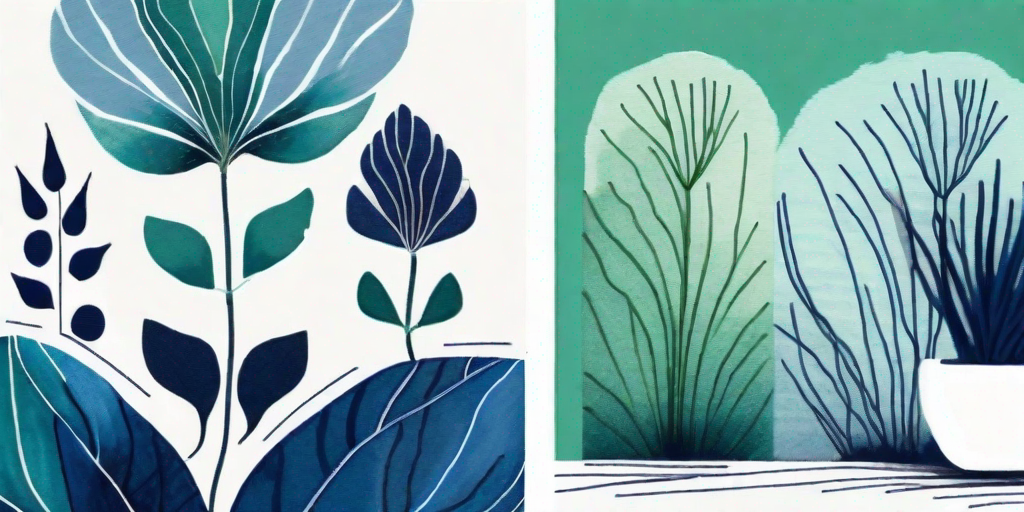
Indigo, the plant that has been the backbone of the textile industry for centuries, is not just a pretty face in your garden. It's the secret ingredient to creating stunning, natural dyes that can transform your fabrics from drab to fab. So, put on your gardening gloves and your artist's beret, because we're about to dive into the wonderful world of indigo dyeing.
Understanding the Indigo Plant
Before we get our hands dirty, let's take a moment to appreciate the star of our show: the indigo plant. This perennial shrub, scientifically known as Indigofera tinctoria, is a bit of a diva. It loves the sun, hates the cold, and demands well-drained soil. But treat it right, and it'll reward you with a bounty of leaves that are just bursting with blue potential.
Indigo plants are typically harvested in the summer, when their leaves are at their most vibrant. But don't be fooled by their green appearance. The blue dye is hidden inside, waiting to be released through a process known as fermentation.
The Art of Indigo Dyeing
Now that we've got our indigo leaves, it's time to get down to business. The process of indigo dyeing is a bit like cooking a gourmet meal. It requires patience, precision, and a pinch of creativity. But don't worry, we'll guide you through it step by step.
First, you'll need to prepare your dye vat. This is where the magic happens. The vat needs to be large enough to hold your fabric and the dye solution, and it should be made of a non-reactive material like plastic or stainless steel. A kiddie pool or a large bucket can work just fine. Just make sure it's not your favorite one, because things are about to get messy.
Preparing the Dye
The first step in preparing the dye is to ferment the indigo leaves. This involves soaking them in warm water for about a day, until the water turns a lovely shade of blue. Once the leaves have done their job, they can be composted, returning their nutrients back to the earth. How's that for a circle of life?
Next, you'll need to add a reducing agent to the vat. This is what will transform the indigo from a water-soluble form to a form that can bond with your fabric. There are many reducing agents to choose from, but some popular choices are fructose, henna, or even urine. Yes, you read that right. But don't worry, we won't judge you if you decide to stick with the fructose.
Dyeing the Fabric
Once your vat is ready, it's time to dye your fabric. But before you toss it in, make sure it's clean and wet. The dye will adhere better to a wet fabric, and any dirt or oils can interfere with the dyeing process.
Submerge your fabric in the vat, making sure it's fully covered by the dye. Let it soak for about 15 minutes, then remove it and let it oxidize in the air. This is when the magic really happens. As the indigo oxidizes, it will transform from a greenish-yellow color to a beautiful blue. Repeat this process until you achieve your desired shade of blue.
Indigo Dyeing Tips and Tricks
Now that you know the basics, let's delve into some pro tips that can take your indigo dyeing to the next level.
First, remember that less is more. Indigo dye is very potent, and a little can go a long way. Start with a small amount of dye and gradually add more if needed. This will help you avoid a case of the "blues".
Second, be patient. The dyeing process can take time, and rushing it can result in uneven color or a weaker bond between the dye and the fabric. So take a deep breath, put on some relaxing music, and let the indigo do its thing.
Creating Patterns
One of the joys of indigo dyeing is creating unique patterns on your fabric. This can be achieved through a technique called shibori, which involves folding, twisting, or tying the fabric before dyeing it. The areas that are bound will resist the dye, resulting in a stunning pattern once the fabric is unfolded.
There are many different shibori techniques to explore, from simple tie-dye patterns to intricate geometric designs. So don't be afraid to get creative and experiment with different methods. After all, the world is your oyster, and the indigo is your pearl.
FAQs
Can I use other plants for dyeing?
Absolutely! Many plants can be used to create natural dyes, each with their own unique color palette. For example, madder root can produce a range of reds and oranges, while woad can produce a similar blue to indigo.
Is indigo dye safe?
Yes, indigo dye is safe to use. However, it's always a good idea to wear gloves and old clothes when dyeing, as the process can get messy. And remember, while indigo is non-toxic, it's not edible. So no matter how much it looks like blueberry juice, don't drink it!
How do I care for my indigo dyed fabric?
Indigo dyed fabric should be washed separately for the first few washes, as the dye can bleed. After that, it can be washed with like colors on a gentle cycle. To maintain the vibrancy of the color, avoid prolonged exposure to sunlight.
Conclusion
And there you have it, folks! You're now armed with the knowledge to transform your garden's indigo plants into gorgeous, blue-dyed fabrics. So go forth, and dye like a pro!
Remember, indigo dyeing is not just a craft, it's a journey. It's a way to connect with nature, to express your creativity, and to create something truly unique. So embrace the process, have fun, and don't forget to share your creations with us. We can't wait to see what you come up with!















